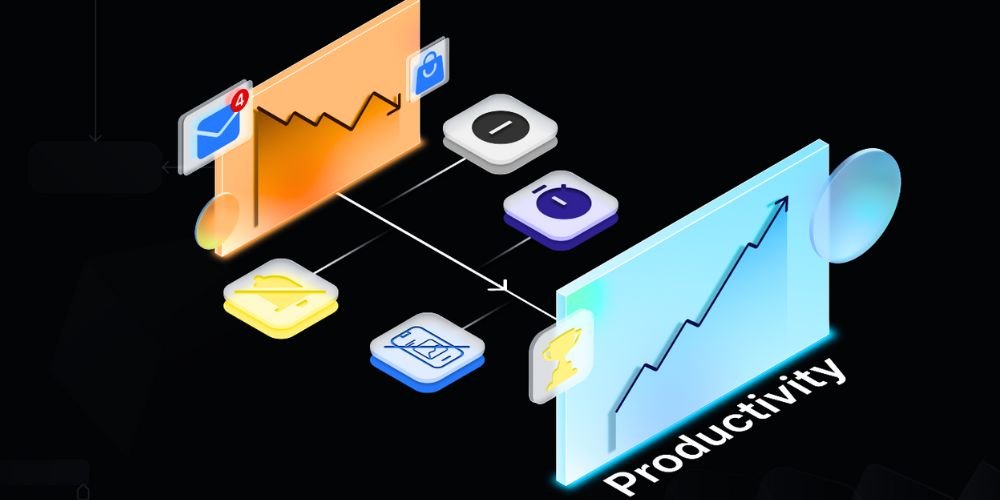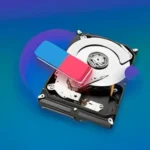The constant influx of information, notifications, and entertainment can be overwhelming and distracting in today’s digital age. Managing digital distractions has become crucial for maintaining focus, productivity, and overall well-being.
Guide to Manage Digital Distractions
This comprehensive guide will explore step-by-step tips on effectively managing digital distractions through a tech detox. Whether you’re struggling with smartphone addiction, social media overload, or a constant stream of emails, these tips will empower you to regain control over your digital life and find a healthier balance with technology.
Recognize the Impact of Digital Distractions
The first step in managing digital distractions is acknowledging their impact on your life. Reflect on how often you check your phone, scroll through social media, or get lost in the rabbit hole of online content. Recognize how these distractions affect your productivity, relationships, and overall well-being. Understanding the negative consequences is essential for motivating change.
In today’s hyper-connected world, digital distractions have become ubiquitous in our daily lives. The constant buzzing of notifications, the allure of social media updates, and the temptation to check emails during every spare moment can all contribute to reduced productivity and increased stress. Recognizing how these distractions impact your life is the first step in taking control of your digital habits.
Set Clear Goals for Your Tech Detox
Define clear objectives for your tech detox. Determine what you want to achieve by reducing digital distractions. Your goals may include improving focus, reclaiming valuable time for other activities, enhancing sleep quality, or nurturing deeper relationships. Having specific goals will deliver direction and motivation throughout your tech detox journey.
Your tech detox goals should be personal and meaningful to you. For example, if you find that excessive social media use is affecting your productivity at work, a goal might be to reduce your daily social media screen time by half. To improve your sleep quality, a goal could be establishing a tech-free bedtime routine to unwind before sleep. Setting clear goals makes it easier to track your progress and stay committed to your tech detox plan.
Identify Your Digital Triggers
Identify the specific triggers that lead to digital distractions. Is it the sound of incoming notifications? The habit of reaching for your phone during idle moments? Social pressure to stay active on social media? Pinpoint these triggers so you can proactively address them during your tech detox.
Understanding your digital triggers is essential for creating an effective tech detox strategy. By identifying the situations, emotions, or circumstances that prompt you to turn to your digital devices, you can develop strategies to counteract them. For example, if boredom is a trigger, you can plan alternative activities to engage your mind and keep your hands away from your phone.
Create a Digital Detox Plan
Craft a detailed digital detox plan outlining your changes to reduce distractions. Consider implementing strategies like:
- Designating specific “tech-free” zones or times in your daily routine.
- Turning off non-essential notifications on your devices.
- Using app blockers or screen time management tools to limit access to distracting apps.
- Setting boundaries with friends and family about when you’ll be available for digital communication.
- Scheduling regular breaks from screens during work or study sessions.
Your digital detox plan should be practical and adaptable to your lifestyle. Start with small, achievable changes, and gradually incorporate more significant modifications as you become accustomed to your new tech detox habits.
Establish Healthy Alternatives
Replace digital distractions with healthier alternatives that align with your goals. For instance, instead of mindlessly scrolling through social media, consider reading a book, walking, practicing mindfulness meditation, or engaging in a hobby you enjoy. These alternatives provide more fulfilling and meaningful ways to spend your time.
It’s essential to have healthy alternatives ready to fill the void left by digital distractions. When you feel the urge to check your phone or engage in digital activities, having constructive alternatives readily available can make the transition smoother. Over time, these healthy alternatives can become your default activities, reducing the temptation to use digital distractions.
Organize Your Digital Environment
Streamline your digital environment to reduce temptations and distractions. Organize your smartphone by removing unnecessary apps, organizing icons into folders, and placing distracting apps on a separate screen. Declutter your email inbox by unsubscribing from newsletters and setting up filters to categorize incoming messages.
Your digital environment plays a significant role in your susceptibility to distractions. You can make a more intentional and focused space by decluttering and organizing your digital devices and accounts. It reduces the likelihood of being lured into unproductive or distracting digital activities.
Communicate Your Intentions
Inform your friends, family, and coworkers about your tech detox and your intentions to reduce digital distractions. Request their support and understanding during this period. When others know your goals, they can help create a supportive environment.
Communication with social and professional circles is vital for a successful tech detox. Letting people know that you may not respond instantly to messages or intentionally limit your screen time can set clear expectations and reduce external pressures to remain digitally engaged.
Practice Mindfulness and Self-Reflection
Incorporate mindfulness practices into your daily routine. Mindfulness meditation can allow you to become more aware of your digital habits and impulses. Take moments throughout the day to reflect on your relationship with technology and how it aligns with your goals. Mindful self-reflection can strengthen your commitment to managing digital distractions.
Mindfulness is a powerful tool for improving self-awareness and self-control in the face of digital distractions. It helps you to observe your thoughts, feelings, and behaviors without judgment, which can be particularly helpful when dealing with tech-related impulses and habits.
Track Your Progress
Regularly assess your progress during the tech detox. Keep a journal or use a digital habit-tracking app to record your successes, challenges, and relapses. Celebrate your achievements and learn from setbacks to refine your approach.
Tracking your progress provides useful insights into your tech detox journey. It allows you to see patterns and trends in your behavior, identify areas where you’ve made significant improvements, and pinpoint challenges that may require additional attention.
Seek Accountability and Support
Consider seeking support from friends or joining online communities focused on digital detox and mindful technology use. Sharing your experiences and challenges with like-minded individuals can provide motivation and accountability.
Accountability partners or support groups can help you stay on track with your tech detox goals. They offer encouragement, share strategies, and hold you responsible for your commitments, increasing your chances of success.
Gradually Reintroduce Technology Mindfully
After your tech detox period, gradually reintroduce technology with mindfulness. Evaluate which digital tools and platforms genuinely add value to your life, and set boundaries to prevent a return to unhealthy habits. Remember that technology is a tool to improve your life, not dominate it.
Reintroducing technology mindfully means being intentional about your digital choices. Consider the impact of each digital activity on your well-being and productivity. Only reintegrate technologies that align with your goals and contribute positively to your life.
Embrace Ongoing Self-Care
Maintain a commitment to ongoing self-care and digital mindfulness. Regularly assess your digital habits and make adjustments as needed. Prioritize self-care practices that promote a healthy balance between technology and the rest of your life.
Digital mindfulness is an ongoing practice that requires continual self-awareness and adjustment. By consistently evaluating and refining your digital habits, you can ensure that your relationship with technology remains in harmony with your values and goals.
Conclusion
Managing digital distractions through a tech detox is a proactive step toward regaining control over your digital life and fostering a healthier relationship with technology. Following these step-by-step tips can create a more intentional and mindful approach to your digital interactions. The benefits of reduced distractions include increased focus, improved productivity, better sleep, enhanced well-being, and more meaningful connections with others. A tech detox can ultimately empower you to lead a more balanced and fulfilling life in the digital age.











